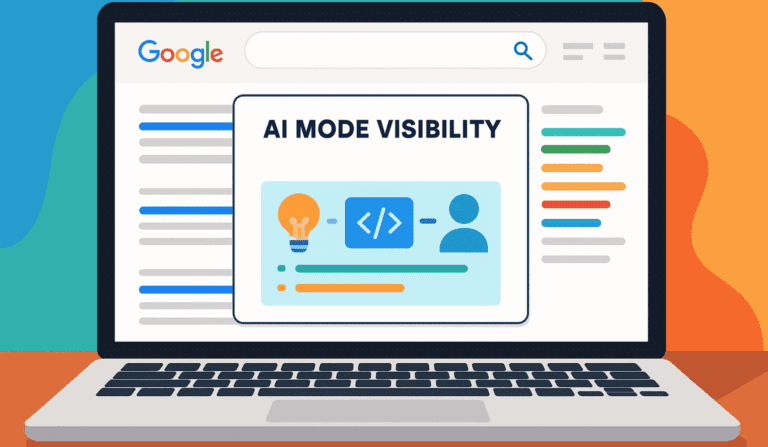Google AI Overviews are changing how search works. Instead of only showing links, Google now summarizes answers directly in the results. That means your content could appear in an AI-generated box before someone even clicks a website.
This shift has sparked a few new names:
- AIO (Artificial Intelligence Optimization)
- SGO (Search Generative Optimization)
- Or simply SEO with a broader meaning, Search Everywhere Optimization
Whatever you call it, the goal is the same: get found more often than your competitors. The bonus is that the same strategies that get you into Google’s AI Overviews also improve your visibility in LLMs (tools like ChatGPT, Gemini, Perplexity, Claude and Grok which are collectively called Large Language Models or LLMs).
1. Content That Anticipates Questions
High-quality content has always mattered, but AI makes it even more critical. To earn visibility:
- Answer questions directly and clearly
- Use headings, bullet points, and structured answers so Google can pull snippets
- Go beyond one keyword and cover related questions your audience is likely to have
- Explore “People Also Ask” and “People Also Search For” sections to uncover related queries (some people refer to this as fan out queries)
Expert tip: Add an FAQ section with real questions from your Google Search Console data. Structured Q&A formats often perform well with AI tools.
2. EEAT and Your Brand’s Unique Voice
Google and AI models look for Experience, Expertise, Authoritativeness, and Trust (EEAT). Strengthen your credibility by:
- Sharing insights from your own experience that competitors can’t copy
- Including client stories or examples
- Citing official sources when using stats (AI tools love repeating numbers)
- Building trust through a strong About page and adding author boxes to your blog posts
Ask yourself: Would someone trust this advice if they knew nothing about my brand?
3. Semantic SEO: Connecting the Dots
AI doesn’t just scan for keywords. It tries to understand entities (people, places, things) and the relationships between them. This is known as semantic SEO.
How to apply it:
- Identify the nouns in your topic (e.g., Botox, Google Ads, compliance)
- Add verbs (optimize, advertise, comply) that connect those entities
- Use adjectives (safe, effective, local) to add context
- Think in terms of subject–object–predicate: “Clinics advertise Botox treatments” creates meaningful connections AI can interpret
You don’t need to get overly technical. Just aim to write content that naturally connects related concepts in depth, not in isolation.
4. Technical and On-Page Optimization
Content comes first, but on-page SEO still plays a role:
- Use optimized titles, descriptions, and headings
- Add alt attributes to images
- Strengthen internal linking between related pages
Make sure every page on your site has a clear next step. Strong internal links keep readers engaged and help search engines understand your site structure. See our blog about using AI to help create SEO content.
5. Be Present Everywhere
AI pulls information from more than just websites. Forums, social platforms, and online discussions are all part of the mix.
- Contribute to Reddit threads (often cited in AI results)
- Participate in relevant Facebook groups or industry forums
- Keep your branding consistent across platforms with the same headshot, bio, and links
You don’t need to compete with big brands like Pepsi or Walmart. Focus on standing out among businesses similar to yours.
6. User Experience Still Counts
Even if Google’s AI provides a quick summary, people will still click through when they need more detail. Make sure your site is easy to consume:
- Add a table of contents for longer posts
- Use visuals, infographics, or short videos with captions
- Provide summaries or tl;dr sections for quick takeaways
- Highlight key terms with bold or italics
Good user experience helps readers and makes your content easier for AI models to scan.
7. How to Measure Success
Tracking AI visibility is tricky because many searches lead to zero clicks. Users often get their answer directly in Google. That doesn’t mean your efforts are wasted.
Try this approach:
- Monitor new queries in Google Search Console
- Search your own target phrases and note when your brand shows up in AI snippets
- Compare results across different browsers, locations, and devices
Some tools are emerging to measure AI visibility, but for now, GSC and manual testing are the most reliable options.
Next Steps for Your Business
Search is evolving quickly, but the winning formula is straightforward:
- Create content that answers real questions
- Show your expertise and build brand authority
- Use optimized content and strong internal linking to connect ideas
- Engage in forums, social platforms, and other spaces where AI gathers information
The businesses that succeed in AI Mode won’t be the ones chasing hacks. They’ll be the ones focusing on clarity, trust, and depth.
Want to stay visible in AI-driven search? DriveTraffic helps small businesses adapt to Google’s changes and stay ahead. Contact us today.




